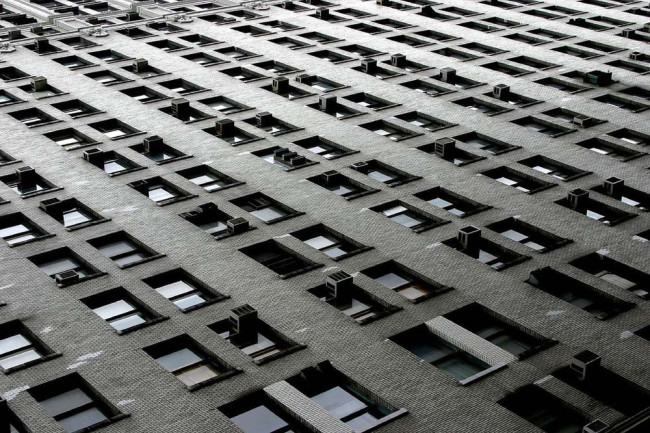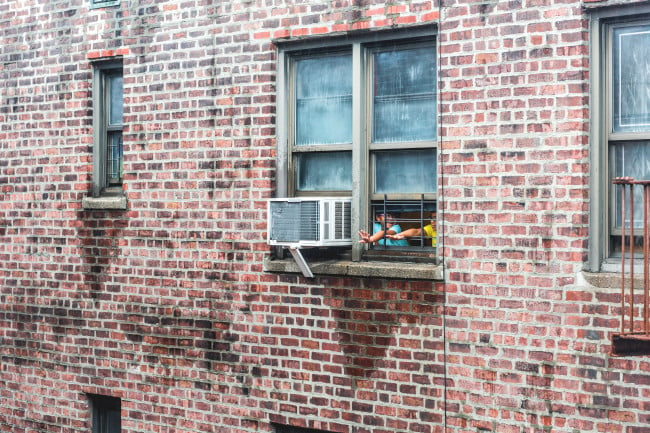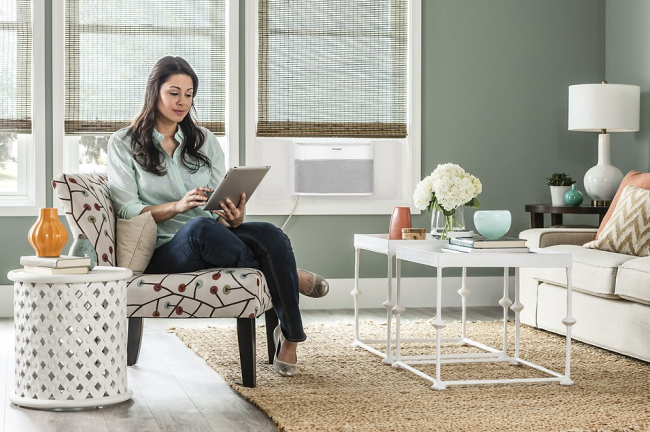It could be worse: remembering a time without air-conditioning in NYC

Last week New Yorkers had their first (bitter) taste of what will be weather-wise this summer, but it's important to keep in mind that as modern-day residents of this fair city we are blessed with a pretty ubiquitous amenity: Air conditioning.
It’s hard to imagine contending with such brutal heat in the days before we had air conditioning, whether in our homes or the chilly sanctuaries of coffee shops, movie theaters, or the city’s cooling centers. But there are moments, of course, when we're forced to. Last year, some Queens residents even resorted to riding air conditioned buses after losing power, CBS reports.
It's not entirely new; in fact, city dwellers have been seeking relief on public transportation for a while. “Broadway had open trolleys with no side walls, in which you at least caught the breeze, hot though it was, so that desperate people, unable to endure their apartments, would simply pay a nickel and ride around aimlessly for a couple of hours to cool off,” Arthur Miller wrote in his essay, Before Air-Conditioning, for the New Yorker. Miller recalls how, during the hottest, pre-A/C days of the late 1920s, New Yorkers would buy ice from street cart vendors, sit on their fire escapes, and sleep in parks to contend with the heat.
[***This story was first published in August 2016, and was updated in June 2017.]
A Gothamist "flashback" article corroborates this, chronicling other methods of making it through the steamiest nights, including sleeping on roofs and city beaches. As for during the day, the writer’s grandfather—an NYC native—says, “It was just taken for granted that you had to suffer.”
Locals did more than just suffer, sometimes. Matthew Murphy, head of cataloguing and metadata at the New-York Historical Society, dug up a New York Times article from the summer of 1926, which reports “three deaths and seven prostrations” at Coney Island, where 600,000 people had headed for relief when temperatures hit the 90s. The three dead were all elderly; the rest apparently passed out from the extreme heat. That same evening, police allowed New Yorkers to sleep on the beach for the first time.
In the N-YHS’ book, When Did the Statue of Liberty Turn Green? And 101 Other Questions About New York City” writer Nina Nazionale explains that by the 1930s, air-conditioning had become commonplace in offices and movie theaters. On the subway, however, the city only began installing A/C in the 1960s, and it wasn’t system-wide until the 80s. (It seems the MTA is terminally sluggish: according to Popular Mechanics, Americans started getting A/C installed in their homes as early as the 1950s.)
Conditions may be worsening
Air conditioning may be particularly crucial in NYC today, as climate change brings extreme heat to a city where temperatures are already higher than they are in the surrounding suburbs. Stan Cox, scientist and author of Losing Our Cool, an investigation of air conditioning’s environmental impact, says that major urban areas like New York experience a heat island effect.
“All the concrete, stone, and steel absorb heat during the day and then release it at night,” Cox explains. “If you're living in the suburbs or a rural area, you have more control over the amount of vegetation and shade around your house, whereas if you're in an apartment in a high rise building, there isn’t as much you can do.”
And in some parts of the city, the heat is especially intense. Adapt NY, a project of the CUNY Graduate School of Journalism that covers how NYC is handling climate change, explains how neighborhoods like Harlem, with its aging infrastructure, scant vegetation, and high density housing, experiences dangerously high temperatures. There are “heat pockets” like these—regions within the city that are even harder hit than others due to their topography, elevation, tall buildings, and other factors—where residents are particularly at risk for heat-induced illness and even death, throughout the boroughs.
It would seem that providing A/C to those who can’t afford it would help prevent such crises, and the city does offer such a program. However, Cox says that the prevalence of air-conditioning could actually be worsening climate change.
The problem with A/Cs
“The main recommendation for adapting to this warmer world is using more air-conditioning, but that will make future heat waves even hotter than they would have been, due to all the extra emissions,” Cox says. “The headline problem with A/C is the greenhouse emissions from power plants that provide the extra electricity for them.” He adds that vehicles using A/C burn extra fuel—seven billion gallons a year, to be exact—and the refrigerants that are used in both vehicle and building A/C systems also emit powerful greenhouse gases.
So what can New Yorkers do? Cox says a little more tolerance for the heat—when we’re not in a major heat wave, that is—isn’t a bad idea: “Outside of heat waves, there are plenty of times when the weather is not so terrible," he says. "If it is possible to open windows and use fans, even though the weather report may say the highs are 89, it doesn’t mean you're going to be suffering necessarily without A/C."
Part of the popularity of air-conditioning, upon its introduction to the public, was due not only to the comfort it provided, but also the status it conferred; according to Cox, it was a symbol of one’s standing in the middle class. But given its damaging effect on the environment, perhaps New Yorkers should view A/C as an emblem of climate change—and resort to fans, instead, when they can bear it.
You Might Also Like



























